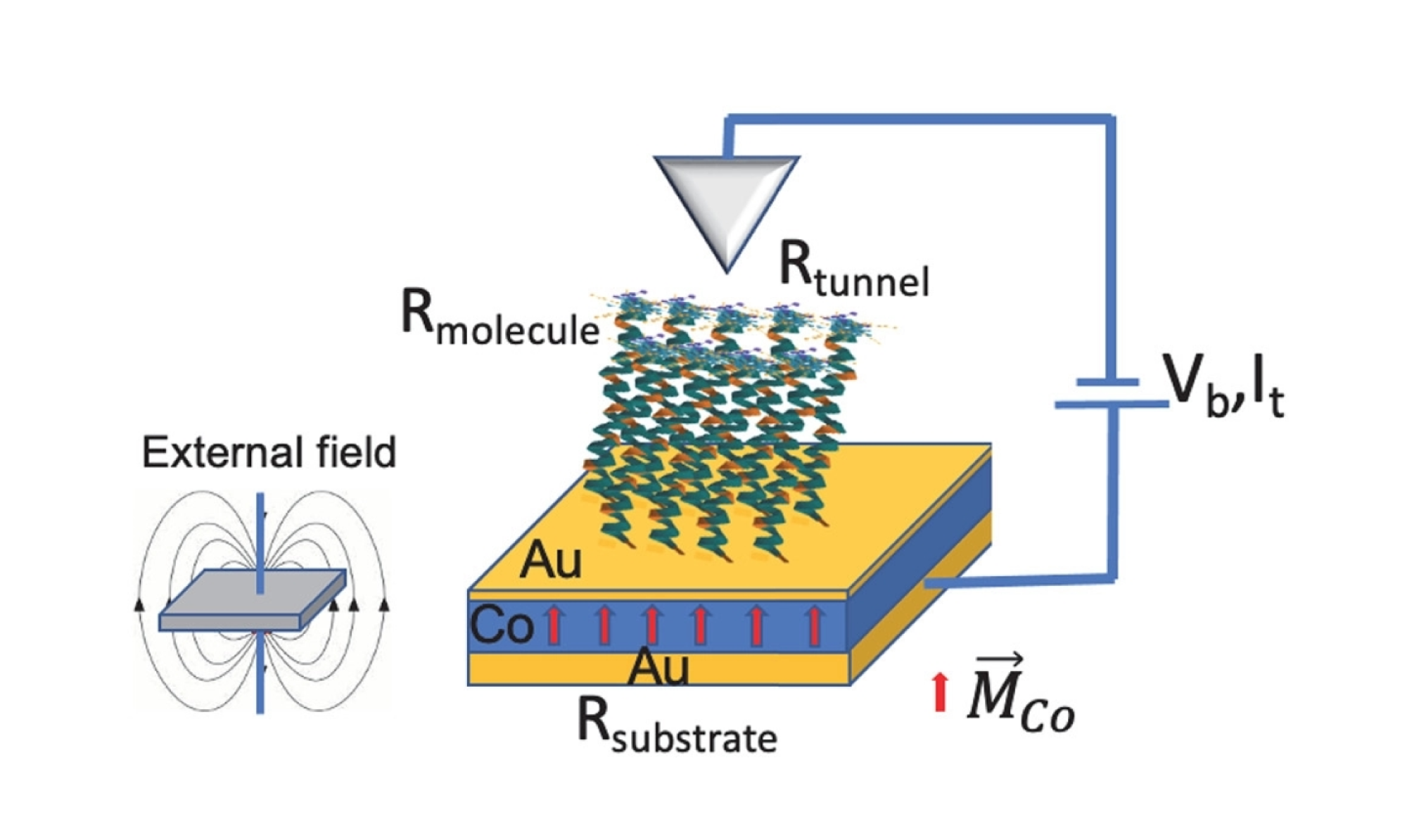In this study we showed that our high spatial and energy resolution of the STM setup allows the correlation of structural details with the electron transmission properties across the hybrid junction.
Thereby, by analyzing the tunneling currents for both constant current and constant height modes for M⃗Co = ↑ and M⃗Co = ↓ configurations the spin polarizations were quantified in detail. The highest spin polarizations were found for well-ordered PA monolayer structures, where the cysteine termination of the PA molecule binds to the Au surface and the PA molecules form a self-assembled monolayer. Therefore, the CISS effect in helical molecules depends on the helical molecule ordering type, proving that it is a cooperative effect, and also on the surface roughness of the capping layer in Au/Co/Au nanostructures. The differences in the tunneling currents for positive and negative bias voltage conditions were analyzed in such hybrid nanostructures. For both the SAM and cluster types of PA molecule ordering, the spin polarization obtained for electrons tunneling along the unoccupied states of the molecules is larger compared to electron transmissions along the highest occupied states.
We correlate this finding with a larger orbital overlap resulting in a higher electron mobility along this molecular channel. Furthermore, the high sensitivity of the tunneling current in the Au/Co/Au/PA hybrid nanostructure measured as a function of the tip−sample distance was used to quantify the magnetoresistance response. Based on Jullière’s model, the spin polarization was derived from the tip−sample distance change Δz.
This opens a way to determine the spin polarization of buried magnetic layers or, if the spinpolarization of the magnetic layer is known, the spin polarization in helical molecules and perhaps of all other chiral (nonhelical) hybrid systems. This hypothesis, however, needs further studies. Our results were recently published in ACS Appl. Mater. Interfaces 2022, 14, 38013−38020.
